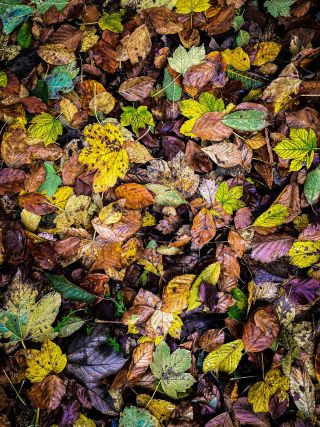Most people don’t want to openly talk about dying or death, but life has a 100% mortality rate and we’ll all inevitably have some version of a funeral. Given the inevitability of death, we all have the responsibility to figure out what to do with our bodies after we die, as we are connected to others even in death.
If you’re brave enough to reflect on your mortality and willing to consider the health of all, keep reading on.

Source: Photo by Bernd 📷 Dittrich on Unsplash
Across the globe, many people are grappling with the impact and challenges of climate change. When confronting the challenges of widespread environmental degradation, considering what happens to your body after you die may not be on the top of your mind. However, the way in which we engage in body disposition and facilitate death practices has an impact on the environment. Environmentally sustainable and eco-friendly death practices can be defined as green death practices, which are a practical action one can take to help address the climate crisis.1
This is a timely issue given that the human population is increasing and, as a result, more deaths are occurring. While death practices vary significantly across the globe, one thing is certain: death practices impact other beings besides us, and a lot of us are fed up with the industrial funeral complex.
Movement Towards Green Death Practices
Within the field of thanatology (the study of dying, death, and grief), there has been a big push for advocacy around offering death practices which minimize contamination, damage, and pollution towards the environment. Green death practices support ecologically sustainable and meaningful alternatives around death care.
This is a stark contrast to cremation and expensive caskets, which are harmful to the environment and place a tremendous financial burden for the recently bereaved.
Green death practices are also done for public health reasons, as standardized funeral practices like embalming can contribute to funeral directors themselves dying prematurely from leukemia due to the chemicals being used.2 Embalming is when the funeral director replaces blood within a body with various toxic and carcinogenic chemicals as to preserve the body. Unfortunately, researchers have also found that embalming fluids can introduce illegal, harmful substances to the local aquatic environment near funeral homes.3
Conversations about green, natural, and ecological burials or funerals are slowly becoming more prevalent as people seek to reclaim their role within the cyclical nature of life. Examples of green death practices may include:
- Biodegradable coffins, made from cardboard or locally sourced sustainable materials rather than chemically treated hardwoods and metals.
- Alkaline hydrolysis (flameless cremation), which uses heat, pressure, and water to accelerate decomposition without releasing toxic chemicals or carbon emissions.
- Sea or tree burials, and other processes where human bodies naturally decompose.
- Woodland environments and green cemetery spaces which support land conservation efforts, and do not use pesticides, fertilizers, or the same fuel required to maintain conventional urban cemeteries.
For some, green death practices are also an expression of spirituality, consciously choosing to return to the earth and participate in a new lifecycle in an altered form. For others, it logically makes sense to not contribute to the ongoing environmental crisis and perpetuate the harms associated with environmental pollution.
There are also issues with green death practices, as fully green cemeteries remain inaccessible to many and are still not well-known. Additionally, green death practices are at risk of becoming exploited to become much more extravagant than necessary, given the multi-billion-dollar funeral industry. This highlights the need for the implementation of structural, political, and social change around death.
If we individually and collectively refuse to accept death practices which are harmful to the environment or our community’s health, opportunities for change begin to emerge. It can be powerful to intentionally choose ecological conservation and health for others even at the end of life, as well as to engage in local advocacy for these options to be accessible and available to all.
Environment Essential Reads
Green death practices offer a unique pathway to honor our relationship to the planet and our own deepest values, while leaving a more compassionate and sustainable legacy for future generations. While we may have no choice about how or when we die, many of us can choose to express our self-agency by talking to our families about our end-of-life values. Creating an intentional plan around death can help us foster a meaningful death, while also offering re-assurance to our loved ones that we are leaving this life in a way that is aligned with our values.
By openly discussing death, we can better figure out how we’re going to honor our loved ones and ourselves. The more normalized it becomes to talk about death, the easier it becomes to re-imagine new death systems and facilitate more intentional death practices.

